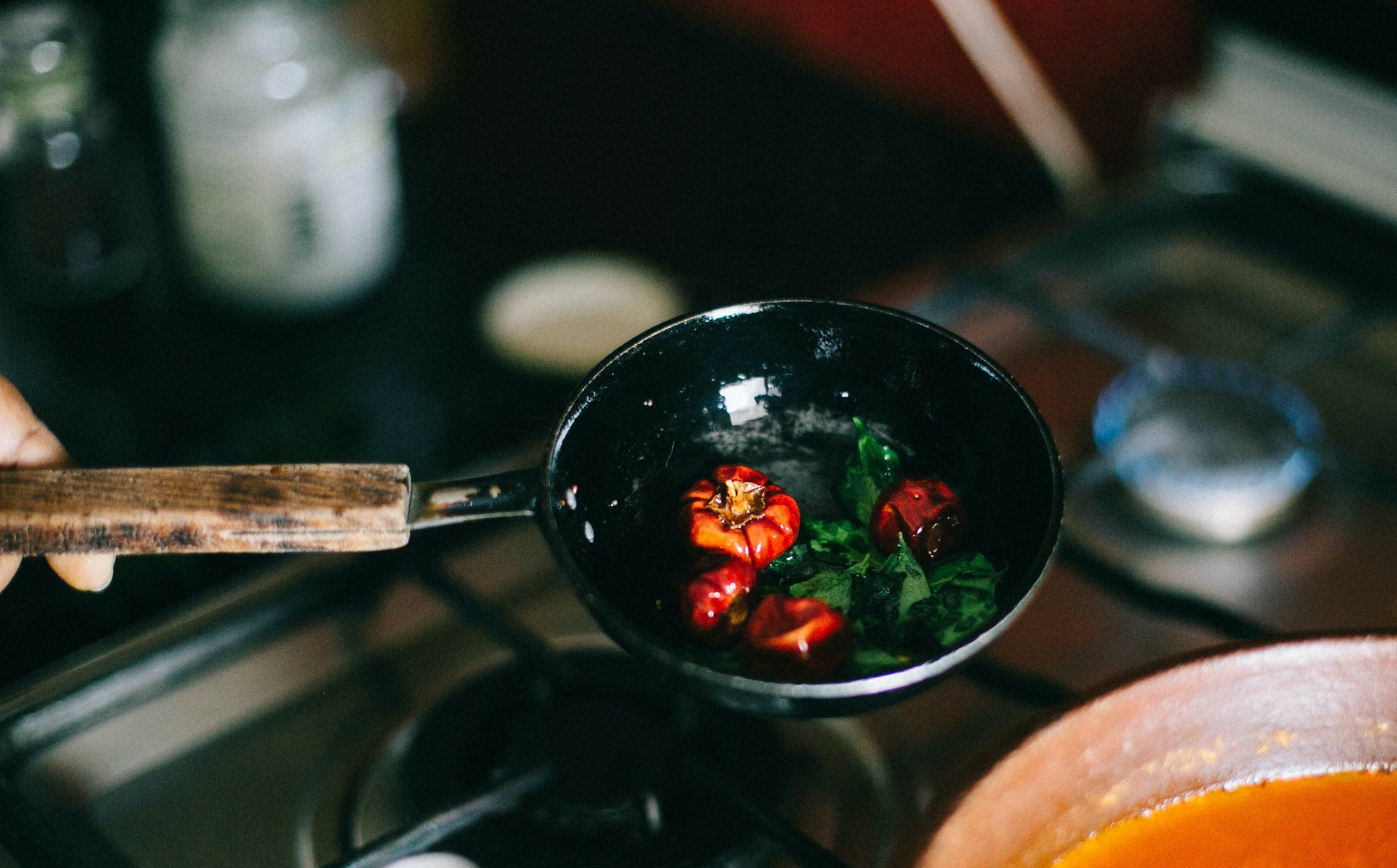Puli Upma in a Madurai Summer

Puli upma or tamarind upma is a deceptively simple dish that is dangerously easy to ruin.
In the blistering heat of a Madurai summer, my cousin and I wait impatiently for our grandmother to wake from her afternoon siesta. She barely manages a few minutes after the day’s chores. Sometimes a power cut wakes her, cursing; other times, we play pranks to rouse her, unable to extend any empathy beyond our anticipation of evening tiffin. In keeping with the times, she was orthodox woman; widowed at an early age, she strictly followed the now-controversial ritual of ‘madi,’ or ‘purity.’ No one was allowed to come in physical contact with her, following her pre-dawn bath, until evening tiffin. As grandchildren, we counted the minutes for her to ‘break madi’ so that we could play with her. Evening tiffin another reason — typically involving the most delicious snacks. My favoruite remains her Puli upma.
Puli upma or tamarind upma is a deceptively simple dish made in some parts of south India. Tamarind is the star ingredient, alongside rice. But it is a dish that is dangerously easy to ruin; you can end up with lumpy rice, and a chokingly dry dish. Or worse still, an upset stomach. Between the Telugu, Kannadiga and Tamilian versions, there are variations on the type of rice used, its form (paste or rawa), the use of onions, and the final consistency of the dish. The Tamil Brahmin version that my grandmother followed uses only parboiled rice, tamarind and red chilli, with seasoning. The key to getting this dish right is balancing the sourness with heat, on a bed of rice paste, that, with continuous sautéing, acquires a delicate, flaky texture.
Given the generous quantities of oil required, and the delicate balancing of texture and spice, it is no wonder this dish is fast vanishing. My mother never attempted it. And I had not tasted it since my grandmother’s passing — until my aunt made it again, very recently.
There are two ways of making puli upma — one that begins by soaking rice, and the other uses a short cut, starting with a rice flour and rawa combination. Both the methods require care to ensure the right consistency as the rice cooks. In the hands of my grandmother, both were masterpieces!
I diligently took down the recipes, and attempted the slow method with much trepidation. I suppose I had my grandmother’s blessings, because what I was left with was an aromatic, beautifully separated, mouth-watering puli upma.
RECIPE: Grandmother’s slow recipe for Puli Upma
Ingredients
1 cup parboiled rice
1 lemon-sized ball of tamarind, soaked in warm water, to extract a paste
4-5 red chillies
Katti Perungayam, hing pieces
3 tbsp gingelly oil
For Seasoning
1 tsp mustard seeds
1 tbsp Bengal gram dal
1 tbsp urad dal
Hing, a pinch
1 spring curry leaves
Salt, to taste
Method
Soak a cup of par boiled rice for about 4 hours along with the red chillies.
Grind together the rice, tamarind paste, red chillies, and hing and salt, adding just enough water to make a course paste.
*In place of red chilly or in combination, you can use mor milagai (red chilly marinated in butter milk and sundried).
Heat about the gingelly oil: add in the mustard seeds, Bengal gram dal, urad dal, hing powder and curry leaves. Now add the batter and stir gently over low flame until the water evaporates. When it reaches a dry, flaky consistency, remove from the heat. Serve hot.
RECIPE: Grandmother’s short cut for Puli Upma
Ingredients
½ cup rice flour
½ cup rice rawa
1 lemon-sized ball of tamarind
4-5 red chillies
3 tbsp gingely oil
For Seasoning
1 tsp mustard seeds
1 tbsp Bengal gram dal
1 tbsp urad dal
Hing, a pinch
1 spring curry leaves
Salt, to taste
Method
Start with a cup of rice flour and rice rawa mixed in equal parts. Ensure that the rawa is not fine but coarse. Soak lemon sized ball of tamarind in water, remove the pulp and to get about two cups of tamarind water. Make a batter with the rice flour, rawa mixture and the tamarind water along with required salt. Proceed as above, but add the broken dry red chilly in the seasoning.
Cook’s caution: This recipe needs a healthy stomach to digest, and I guess our evening walks with our grandmother after this tiffin helped.
Sumathy Krishnan likes writing about food more than making it.
ALSO ON THE GOYA JOURNAL







